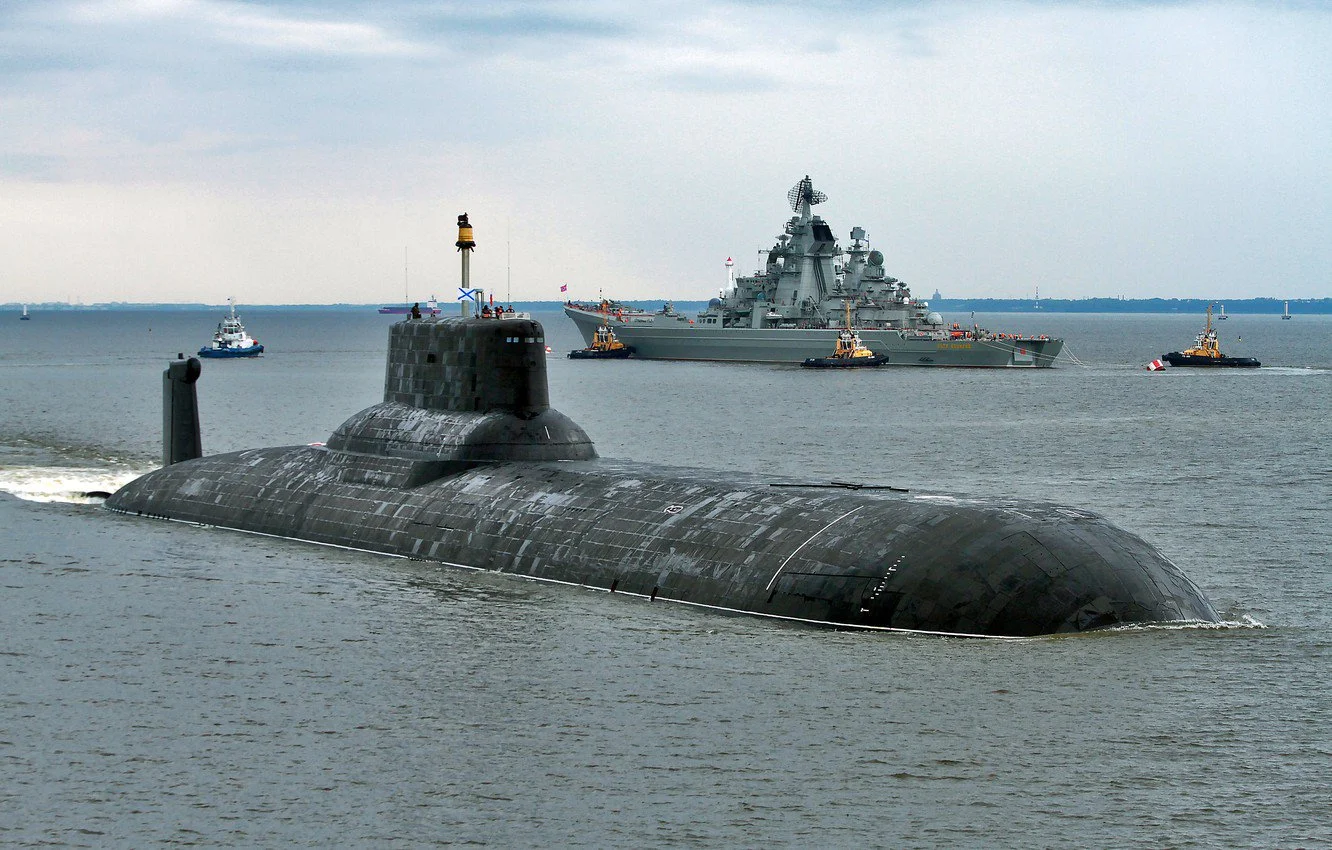Russia’s Huge but Aging Typhoon-Class Submarines – Russia’s Typhoon-class submarines still hold the title of the largest submarines on Earth today. They are ultimately relics of the Cold War and its requirements. Each Typhoon-class sub was intended to play an essential role in the Soviet Union’s strategic doctrine and nuclear triad.
Today, the fate of the Typhoon class is shrouded in uncertainty, as the Russian Navy decides how and whether to modernize the remaining examples of the class.
Typhoon-Class: A History
The submarines are also referred to by their official Soviet code name “Akula,” which means shark in Russian, a name confusingly shared with several other classes of Russian military submarines.
With a displacement of 48,000 tons while submerged, the Typhoon is a true behemoth in scale.
The main job of the Typhoons is to carry 20 similarly massive RSM-52 submarine-launched ballistic missiles.
In 2005 the Dmitry Donskoi, the only remaining example of the class still in active service, successfully tested Russia’s relatively new RSM-56 Bulava submarine-launched ballistic missiles, which were designed for Russia’s newer Borei class submarines and could also be used by the Dmitry Donskoi in addition to the RSM-52. In fact, the principal use for the Dmitry Donskoi today is as a weapons testing platform for the Bulava, but it remains in service nonetheless.
The Typhoon class was also designed to include six torpedo tubes capable of carrying torpedoes and anti-submarine missiles. The Typhoons are propelled by two nuclear water reactors and have special reinforcement on the sail and hull of the submarine for breaking through ice.
Typhoon-Class Details
Six examples of the Typhoon class were built before the collapse of the Soviet Union. Three of the submarines have subsequently been scrapped, and two others, the Arkhangelsk and Severstal, have been decommissioned and are currently awaiting a final decision on whether to refit them or scrap them.
While the Typhoons were initially designed to patrol under the ice of the Arctic to wait for a possible signal to participate in a hypothetical nuclear exchange, Russian Vice Admiral Oleg Burtsev proposed in 2019 that the Arkhangelsk and Severstal could be refitted with Kalibr cruise missiles in response to the refit of the United States’ Ohio-class submarines with their own cruise missiles.
Such a refit, even of just one of the two decommissioned Typhoons, would undoubtedly be a heavy lift for the Russian defense industry in terms of cost and expertise, but could fit in well with the Russian navy’s future plans to become an agile force capable of protecting Russia’s long Arctic coastline and maintaining Russia’s nuclear deterrent.
The End of the Typhoon-Class?
For now, the only Typhoon that the Russian Navy has left to work with is the Dmitry Donskoi, which is interestingly also the first of the class to be built.
The Typhoon-class’s previous niche in Russia’s nuclear deterrent is now complemented (and increasingly co-opted) by the introduction of the smaller and more modern Borei-class ballistic missile submarines, the first of which joined the Russian fleet in 2013 after years of construction delays.
Russian state media reported in 2021 that the Dmitry Donskoi would not be retired for at least five years, or at least until a new Borei-A nuclear-powered ballistic missile submarine is completed which bears the name Dmitry Donskoi as well. However, this is likely a highly optimistic assessment of Russian procurement trends. It is a distinct possibility that the final Dmitry Donskoi could see significantly more service time in the future if its Borei successor is delayed.
The Russian Navy could be forced to make a difficult decision on the fate of the Dmitry Donskoi sooner than it may like. As noted by Russian state media in 2021, nuclear fuel in the submarine’s reactor will likely run out in 3-to 4 years, at which point the decision about whether to make the costly investment in restarting the reactor or to finally retire the ship will need to be made.
Wesley Culp is a Research Fellow at the Center for the Study of the Presidency and Congress. He regularly writes on Russian and Eurasian leadership and national security topics and has been published in The Hill and the Diplomatic Courier. He can be found on Twitter @WesleyJCulp.

